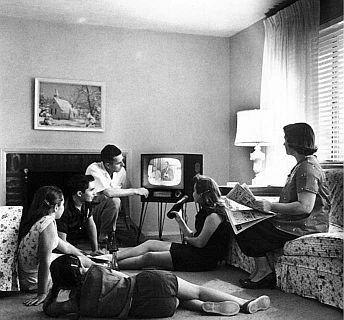
Ladies and Gentlemen, new readers and old, please join in welcoming to the Clarion Content our first GUEST COLUMNIST!!!
A distinguished native North Carolinian and ardent TV watcher brings you the latest news on high-def technology...
UHD
One day when I am old and grey, I will tell my grandkids about the wonderful and exciting transition from standard definition to high definition (HD) television back near the turn of the century. My stories will probably sound similar to my parents telling me about the transition from black and white to color TV. But the biggest leap in technological advancement for video may be saved for our kids (or grandkids) as they live through the transition from HD to UHD.
Japan’s Broadcasting Corporation (NHK) first began working on the current high definition format in 1964. After approximately 40 years, HD has finally taken a strong foothold toward its inevitable rise as the new standard for TV broadcasting. On its heels is the next generation broadcasting video format being developed by NHK that would take movies and TV to an entirely different level.
Back in 2003, NHK introduced an experimental digital video format call Ultra High Definition (UHD) with a resolution of 7680 x 4320 pixels, compared to the 1920 x 1080 pixels of current full high definition (HD) format. Think back about the first time you saw high definition programming and how simply incredible the picture seemed compared to standard definition. The resolution of HD content is approximately 5 times the resolution of standard content. Compare that to UHD which is 21 times the resolution standard content! UHD also calls for 22.2 surround sound: (10 speakers at ear level, 9 above, 3 below and 2 for low frequency) compared to HD’s 5.1 surround sound.
The technology is billed as “total sensory immersion” to the level of physically being at the location of the broadcast, a literal electronic window to the world. Along with the development of hardware required for the technology, NHK is concurrently studying the physical and psychological effects of UHD. At one demonstration, a short film, shot in UD by placing the camera on the front of a car driving along a country road, was projected on to a large screen at a technology trade show. Viewing the film caused several audience members to experience nausea from the ultra realistic visual effect of speed without the usual physical sensation of movement. For some people, the brain could not tell the difference between the images on the film and the reality of being in the car.
Also known as “Super Hi-Vision”, the video format is still many years away from crossing the line from experimental to marketable. Currently the format requires a 450-inch diagonal screen to fit the 32 million pixels. NHK is working on how to apply the format to smaller screens. Another problem is the massive amount of data needed to create the signal. When tested, 18 minutes of UHD footage required 3.5 terabytes of storage (or about 750 DVDs). Even more challenging due to the signal’s vast size, is the speed required while transmitting. During demonstrations, the data had to be transmitted over 16 channels at a total rate of 24 gigabits per second, which is thousands of times faster than a typical DSL connection. NHK has made advances on compressing the signal in the last couple of years, but certainly the signal’s enormous size remains one of the biggest challenges to advancing the technology from drawing board and into the real world.
This technology can produce images that are more palpable and vibrant than anything you can currently imagine. Is this level of clarity and realism always a good thing? One demonstration of the technology showed clips of sumo wrestlers which many in the audience agreed was much too clear for comfort! And as mentioned earlier, some people may have a difficult time both physically and psychologically contending with an image that is as life like as being there.
NHK expects the format to be available by 2015. How long it may take to be applied to film or TV is anybody’s guess.
No comments:
Post a Comment